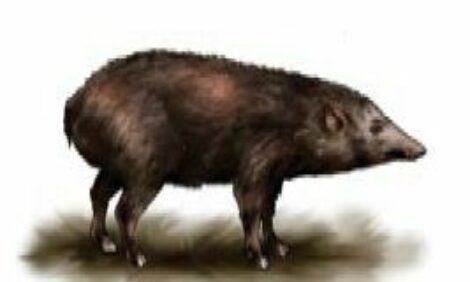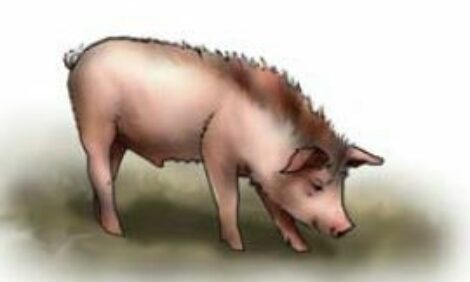



Cantonese
The Cantonese pig was developed in the Zhujiange delta in the Pearl River area near Guangdong, China. The Cantonese Pig were raised for both meat and fat, which was often used as a lubricant as well as in cooking. Rice farmers would raise a few pigs, feeding the swine leftover food, rice husks, and the inedible parts of their vegetables. Pig rearing was more highly capitalised than rice production, due to the existence of pig buying clubs and pig raising co-ops. Pig farming in China even today tends to be a secondary agricultural activity engaged in by rice or vegetable farmers who feed the pigs their leftover agricultural products, instead of the factory farm raised pigs of the West. Many Cantonese pigs are raised to be slaughtered in celebration of the Chinese New Year, when it is traditional to eat roast pig.
Cantonese pigs are black and white. They have thick black hair with a few strands of white. Many have a vertical white band around the front hind legs. Cantonese pigs are wide and heavy, with protruding bellies. Unlike many pig breeds, Cantonese pigs usually retain small tusks. Aside from these, it could be said that Cantonese pigs strongly resemble the classic piggy bank, with a short fat body, protruding belly, short snout, full cheeks without the dished snout of many white pig breeds, and short legs. This is an apt comparison, as this breed was often a form of savings or investment for the average farmer, something sold to pay for school fees, unexpected medical bills or raise any other sudden large sum of money.
A domestic farm Cantonese pig averages 6 to 10 baby piglets in a litter, and will have two to three litters per year. They follow the weaning timeline of many other large breeds, but are not particularly well adapted to fast weaning schedules.






